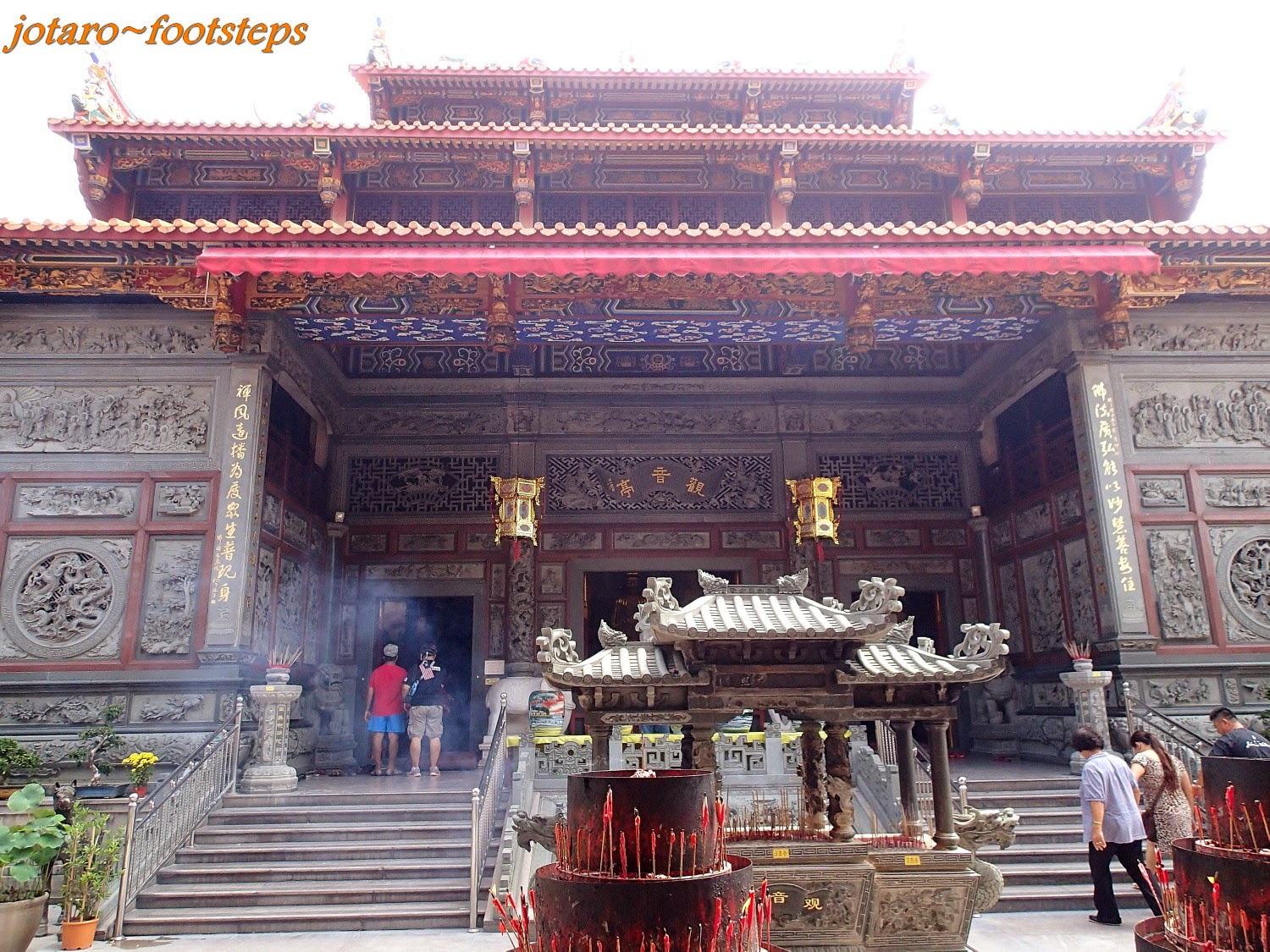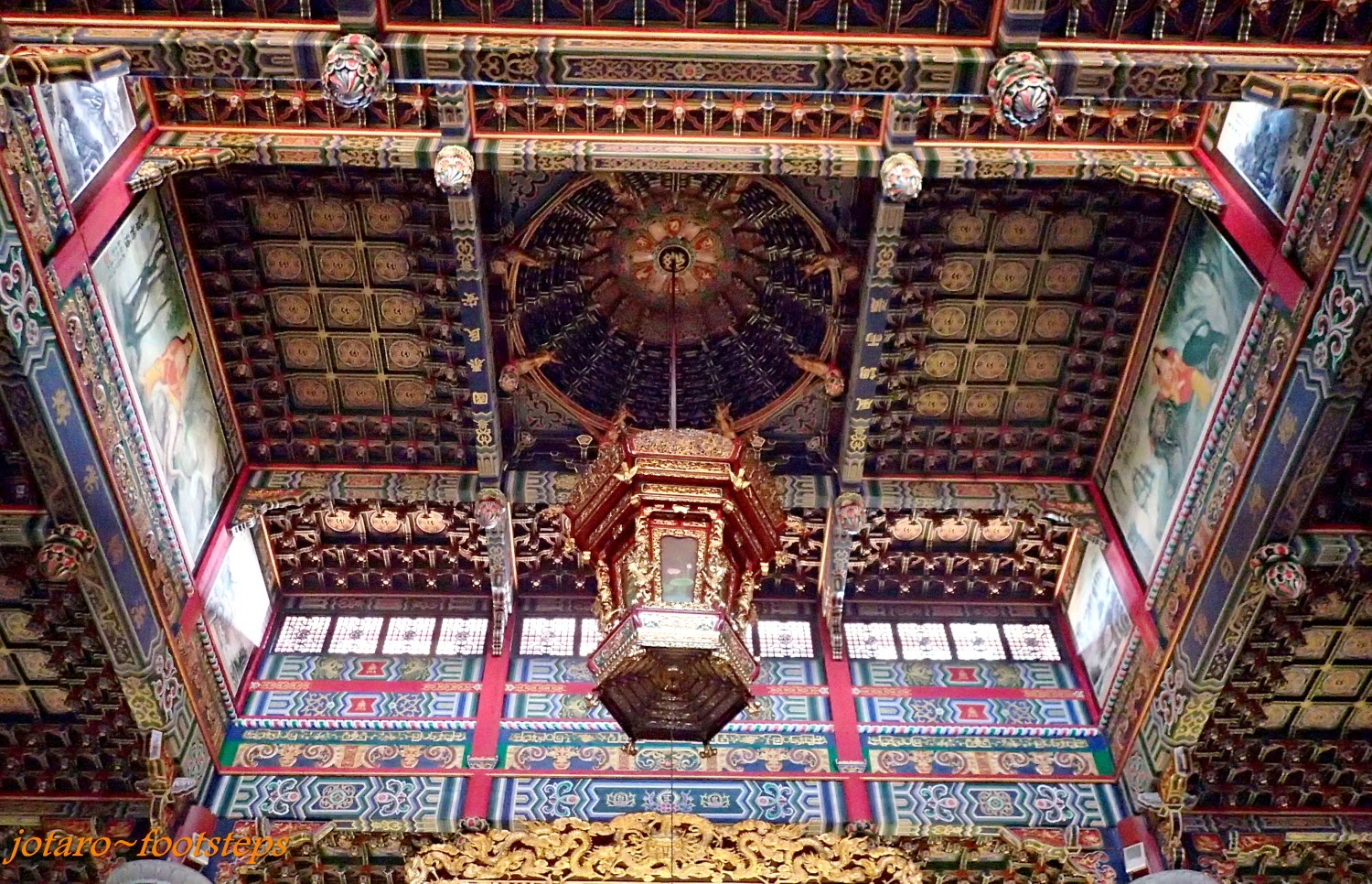Footsteps - Jotaro's Travels
KUAN YIN TEMPLE KLANG
Klang Town, Klang, Selangor, Malaysia - January 2015
Klang Town, Klang, Selangor, Malaysia - January 2015
I love temples and have visited a few in my travels. They are as varied in design and culture like those in Japan & Indonesia, some are simple in design while others are opulent, and some centuries old and a few fairly new (.... see them at Jotaro's Travel Sites blog).
My cycling adventures has also taken me to visit a few. We cycle once a month from Kuala Lumpur to Klang, to have good eats and explore the town a bit. This time round we visited the Kuan Yin Temple in Klang town.
The Kuan Yin Temple is listed as the No. 10 destination of the Klang Heritage Walk, a walking tour of the older part of Klang town that takes participants to several old sites of the town.
Built in 1892, it is over a century old and is one of the oldest temple in Malaysia. At one time it was in dire condition with termite infestation threatening to destroy the old buildings. It was almost demolished until the Sultan of Selangor declared it a state heritage site. Funds poured in and the temple was restored to it's former beauty. The locals in their Hokkien call it the Kuan Imm Teng. It is now an actively used temple for prayers.
The temple is fairly large one sitting on a large compound with an entrance pavilion leading to the main pavilion which takes centre stage, and a few ancillary building at it's side. On another side is a nice Chinese garden with a Koi pond and beautiful statues. Let's enter through the large red doors of the main entrance doors and see what it has to offer.
THE ENTRANCE PAVILION
 |
| (Extract from Star Newspaper) |
 |
| Main entrance archway with large red Chinese riveted doors. |
The temple is fairly large one sitting on a large compound with an entrance pavilion leading to the main pavilion which takes centre stage, and a few ancillary building at it's side. On another side is a nice Chinese garden with a Koi pond and beautiful statues. Let's enter through the large red doors of the main entrance doors and see what it has to offer.
THE ENTRANCE PAVILION
The first building that is seen upon entering is the Entrance Pavilion which sits in front of the Main Prayer Pavilion. It is by itself is an elaborate building.
 |
| Side view of Entrance Pavilion. |
It looks like a fairly new structure and probably is a rebuilt building.
Artisans from China were brought in to finish off the stone and timber work detailing of this building.
A carved granite dragon stone column.
A closer look at the dragon's head.
A couple of other dragons guard the stone incense burner.
At the Entrance Pavilion, enclosed in a glass altar is a statue of a Laughing Buddha to which devotees can prayer.
And above are elaborately carved timber ceiling, this one a staggered circular one.
Next to it is another octagonal shaped elaborately carved timber ceiling.
Stepping out from the Entrance Pavilion to head towards the Main Prayer Pavilion, is an open space in which is this elaborately carve dragon incense burner.
THE MAIN PRAYER PAVILION
From outside the Main Prayer Pavilion don't seem to be as imposing as the Entrance Pavilion; this is perhaps there is not enough space between the two to view this building in it's grandeur. A small foyer section lies just before entering the prayer hall.
At the foyer, the main door into the prayer hall is barricaded, but from here one can kneel on a cushion and pray.
Part inside view of the Main Prayer Pavilion, showing it's large size with tall ceiling.
Inside the main prayer hall (the centre hall), devotees take their turn to kneel in front of the main altar to pray to Kuan Yin.
Kuan Yin sits serenely overlooking the altar. She is flanked by her loyal attendants, the Jade Girl and the Golden Boy.
The elaborate timber ceiling above the main altar.
Close up of the large red lantern with gold trimmings and elaborately carved timber detailing. Behind it can be seen the detailed workmanship of the timber ceiling and the corbels holding up the ceiling joists.
On the right hall is another altar dedicated to the goddess Mazu, protector of sailors and fishermen.
The left hall has an altar with dragon carvings and paintings. Klang being a fishing town, this altar is dedicated to Fa Zhu Gong.
A glimpse back just as we leave, colourfully painted vases line a low railing wall.
ANCILLARY BUILDINGS & STRUCTURES
The secondary temple on the right of the Main Prayer Pavilion.
A peep into the corridor between the Main Prayer Pavilion and the secondary temple.
Right side colourful phoenix window.
Left side colourful phoenix window.
Memorial Dedication Wall.
Offering burning pavilions and a small shrine near the entrance gate.
Glazed tiles of a colourful dragon on the side wall of the offering pavilion.
THE TEMPLE GARDENS
A small round Chinese gateway opposite leads to the temple gardens.
The garden ground, a small tea pavilion sits above a Koi pond.
The Koi Pond.
Kuan Yin Statue, standing on a lotus bloom.
Celestial Maiden stone statue.
Laughing Buddha statue.
The Eight Immortals carved wall panel.
THE CHINESE TEMPLE ROOF
Much of the beauty of Chinese temples lie in their roof; the sleek up-turn curves, the detailing on their ridges, statues on their edges, the elaborate eaves and even carvings on their gable walls.
Superb Chinese temple roof design is seen in the Entrance Pavilion, from elaborate cornices, roof eaves and roof ridge decorations.
The other side of the Entrance Pavilion roof.
Dragons on top of the Entrance Pavilion roof "chasing" after the sun.
Asymmetrical roof of the Entrance Pavilion as seen from the side.
Although sometimes large and often elaborate in design, simplicity comes in too in terms of balance as seen in these roof hip edges.
The Main Prayer Pavilion roof, at the lower right is the roof of the secondary temple. Notice the difference in the detailing. Looks like the Main Pavilion's roof is a rebuilt new roof whilst that of the secondary temple is a restored older one; the older one's detailing and craftsmanship looks more elaborate.
Gable wall decoration of Main Prayer Hall.
The roof of the secondary temple.
A closer look at the roof ridge detailing.
Gable wall carving of the secondary temple.
As we left the temple, the rolling roof of the perimeter walls seems to bid us goodbye.
Kuan Yin Temple (Kuan Imm Teng) Klang
30, Jalan Raya Barat, Selangor Darul Ehsan, Kawasan 6, 41000 Klang, Selangor, Malaysia.
Tel: +6016-331 6989
Hours: 6:00am to 8:00pm (Everyday)
Entrance Fee: Free
GPS & Direction Map: 3.03758, 101.44275
You may also like :
 |
 |
 |
 |
 |
 |
 |
 |
 |
 |
 |
| Malaysia - Street Art of Ipoh, Perak : May 2014 Street art is slowing but surely blooming in Ipoh. |
 |
 |
If you like this, view my other blogs at Jotaro's Blog
(comments most welcomed below. if you like this pls share via Facebook or Twitter)


















































No comments:
Post a Comment